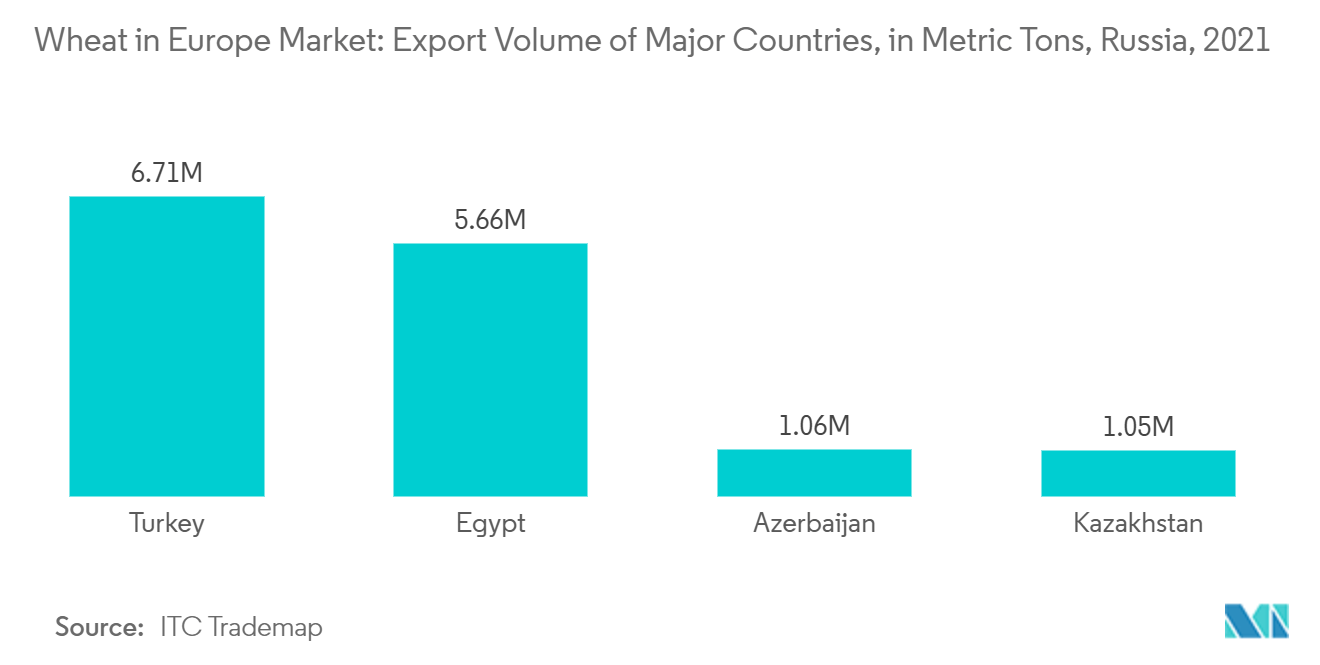Market Trends of Europe Wheat Industry
Rising Demand for Wheat-Based Products
Wheat serves as a staple cereal crop across Europe, with Malta, Italy, and Romania leading in consumption. As urbanization reshapes lifestyles, there's a noticeable shift towards convenience foods, such as bread and confectioneries. This evolving preference, emphasizing nature, convenience, and indulgence, has resulted in reduced time for home food preparation, further boosting wheat consumption.
Wheat is a primary ingredient in various bakery and food products, with its usage being particularly pronounced in Europe. Many Europeans consume bread or wheat-based meals daily. Beyond this, wheat's gluten content acts as a natural binder, making it ideal for baked goods and processed meats. Eurostat data reveals that in 2023, the European Union ranked second globally in wheat consumption, trailing only China, with a consumption of 110,000 thousand metric tons. This uptick in wheat-based food production directly correlates with heightened wheat consumption in the region.
Moreover, Europe's growing self-sufficiency in wheat production further fuels its consumption. OECD data highlights a rise in per capita wheat consumption in Europe, from 89.5 kg in 2020 to 90.04 kg in 2021. This surge aligns with an increase in harvested wheat areas, growing from 70.1 in 2020 to 71.2 in 2021. As more land is dedicated to wheat cultivation, production rises, subsequently driving up per capita wheat consumption and propelling market growth during the forecast period.

Russia Dominates Wheat Exports in the Region
In 2022, Russia emerged as the leading wheat producer in the region, generating approximately 104.2 million metric tons of grain, marking a 37% surge from the previous year. On the global stage, Russia ranks third in wheat production, trailing only behind China and India. The harvested area for wheat expanded from 27.9 million hectares in 2021 to 29.3 million hectares in 2022. Southern Russia's black soil region, renowned as one of the world's premier agricultural lands, primarily cultivates wheat as a winter crop.
USDA data indicates that in 2021, Russia's wheat consumption reached 41,750 thousand metric tons. As a staple food, wheat consumption in Russia is projected to rise. However, given wheat's sensitivity to weather, its production remains vulnerable to climate change. Yet, with vast untapped land resources and notable yield gaps, Russia is poised for a significant boost in wheat production. Nonetheless, the warming climate and extreme temperatures pose threats, potentially jeopardizing global food security for key crops like wheat.
USDA reports confirm Russia's status as the world's top wheat exporter, holding a 16.5% share of the global wheat export market in the 2023 marketing year. ITC Trade Map data reveals that in 2023, Russia's wheat exports were valued at a substantial USD 9,821.4 million. Major importers of Russian wheat in 2021 included Turkey, Egypt, Azerbaijan, and Nigeria, accounting for 24.7%, 21.2%, 4%, and 3% of imports, respectively. Notably, Egypt, the world's largest wheat importer, consistently turns to Russian and Ukrainian wheat to satisfy its domestic needs. With its leading position in both production and exports, Russia firmly establishes its dominance in the global wheat market.


